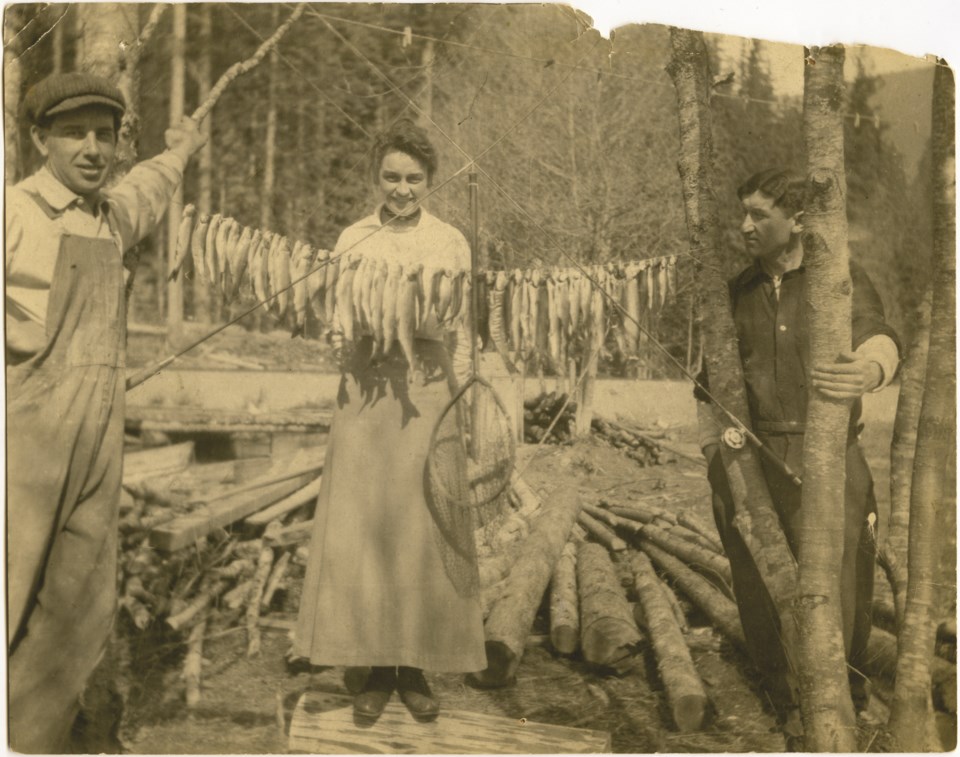When I was working with Shayne le Poer Trench on my column a while back about what people were up to in the kitchen when COVID flipped our world upside down, we started talking about the…
Well, some would dispute it was the good ol’ days of Whistler, so let’s just call it the “old days” of the early ’80s. That’s when she and I first met in the funky Whistler Question office above Dave Kirk’s ski shop (now Southside Diner) and across from the Husky gas station. She, one of our wondrous typesetters at that time; me, cub reporter fresh out of journalism school.
‘What did we eat back then?’ Shayne and I prodded each other repeatedly as we tried to zap our faulty hard drives into sparking some useful synapse or another. Definitely not the soothing congee she was describing, a favourite of hers and Hugh Smythe’s (one of Whistler’s “founding fathers”). Definitely not the interesting quick bites you find everywhere around town now—the ahi poke at Sushi Village, the Popeye pasta at Alpine Cafe; even a big-ass pancake at Southside Diner.
Nothing like that.
What we pretty much landed on was, we ate whatever was around: A tin of something—pork ‘n’ beans, soup—or a plastic-wrapped sandwich from the Husky grocery store, the only grocery store around. Hamburgers and fries at L’Apres; or maybe, if you went all out, a steak at JB’s restaurant. (What a treat Mexican food was when Dos Senoritas took over the old JB’s!)
All to say it was pretty much a variation on a theme described by Jeff Slack, back when he was Whistler Museum’s programs manager (he’s now a local outdoor guide and snowboard instructor), and he and I were talking about what kind of foods sustained the earliest locals.
“You eat whatever you can,” Jeff noted at the time. Indeed.
Pretty amazing that same phrase has resonated more than ever these past months, what with lockdowns and disrupted food supply chains from here to the Fraser Valley and beyond. Supply chains disrupted still, what with labour shortages, quarantines and, now, wildfires.
Grocery supplies are way better now, but remember the empty store shelves? The empty cupboard shelves at home and the motley leftovers in your fridge that you had to cobble a meal out of? Just like the good ol’… I mean, the old days, including when there was no road to Alta Lake, just a train a couple of times a week, or supplies lugged in by packhorse.
You eat whatever you can—a golden rule from bygone days, especially for the Indigenous people who lived in the valley for eons long before any trains or early settlers meandered through.
So when everything comes from nature, and you have to eat whatever you can, what do you eat? All kinds of berries from meadows and forests: salmonberries, thimbleberries, blueberries, huckleberries, raspberries, brambleberries, blackberries and salal berries, or maybe cloudberries, or Xusem, which Mixalhitsa7 Alison Pascal, the amazing curator at the Squamish Lil’wat Cultural Centre, processed during quarantine. (See her Ancient Medicines blog on the centre’s website describing the arduous process.)
You eat Saskatoon berries fresh and dried. Indian plum berries when they’re fully ripe. Red elderberries when they’re cooked (not raw). Rose hips for tea.
You eat edible roots and tubers: Yellow glacier lily, spiny wood fern, wapato, nodding onion, wild sweet potatoes, wild carrot, bear root, sweet vetch and balsamroot, to name a few.
You eat meat from animals and birds, hunted and trapped, large and small. Fish, plenty of fish, from lakes, streams and rivers. Salmon, salmon, and more salmon from Howe Sound. Animals useful for fur also yield food. Greasy as it is, beaver, which I featured last column and could find no confirmation of as a food source, was definitely excellent fuel for the calorie-burning lifestyles of First Nations and pioneers, according to Mr. Slack.
There’s deer, lots of it; moose, rare though it is; ground squirrels; even porcupines. And delicious ptarmigan and waterfowl.
John Millar, an early pioneer in Whistler Valley, namesake of Millar Creek and reputedly on the lam after killing a couple of people in Texas, was known for serving muskrat stew and Stellar’s jay pies to people overnighting at his place en route along the Pemberton Trail, which wound from the Chilcotin Plateau to Vancouver, connecting the gold fields to the coast.
Even though most of us aren’t on the lam these days, we’re still keeping our distance, which means lots of time on our hands. So if you’re curious about this whole idea of eating whatever you can in the context of Indigenous foods—tasting them with a modern spin or learning about them—visit the Squamish Lil’wat Cultural Centre. Or stop by the museum, where you can pick the brains of their amazing staff and pick up your own copies of books connecting us to earlier times, when making the best of whatever life delivered was the rule, not the exception. Holiday Favourites from Whistler, the second cookbook the museum published, features favourite local recipes getting ready for you-know-what. It’s a great companion to First Tracks by Florence Petersen, founder of the Whistler Museum & Archives Society. This lovely book features the history of the Whistler Valley from the 1900s until the opening of the ski hill in 1966, when the community of Alta Lake (as the valley was then known) was made up of a handful of fishing lodges, and a scattering of those hardy trappers, prospectors, loggers, railway labourers and their families who knew how to “make do”—including John Millar and the cooks at Rainbow Lodge.
First Tracks is also available at the world’s best little local bookstore, Armchair Books. Bonus: all proceeds go to the museum.
Glenda Bartosh is an award-winning journalist who likes to keep things in perspective.




